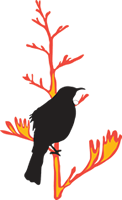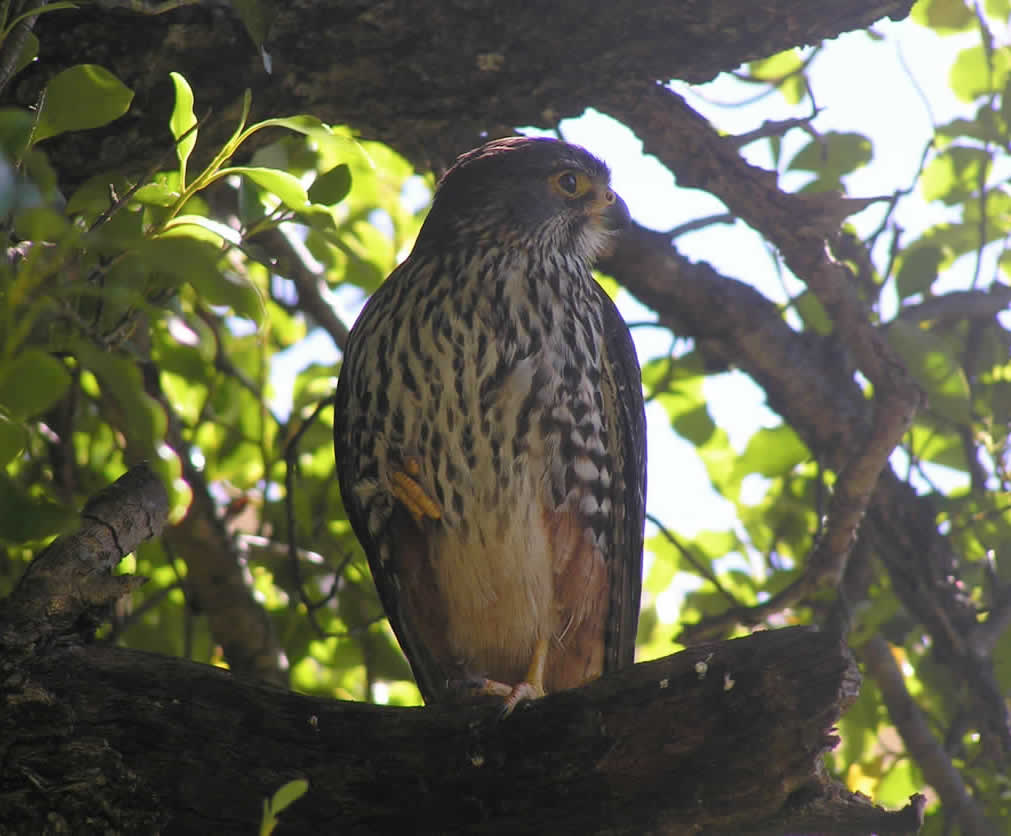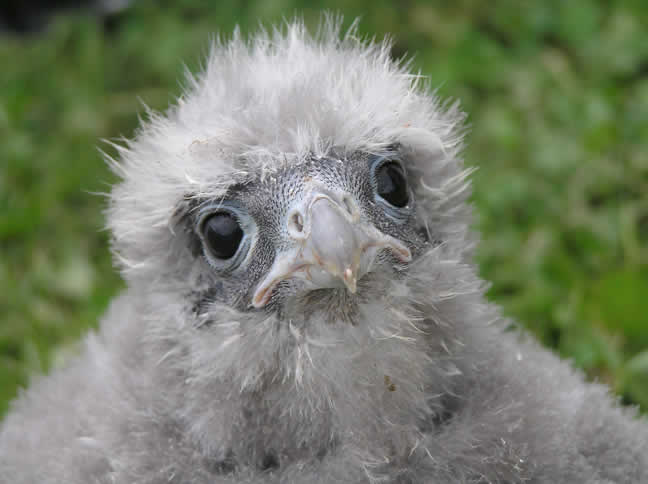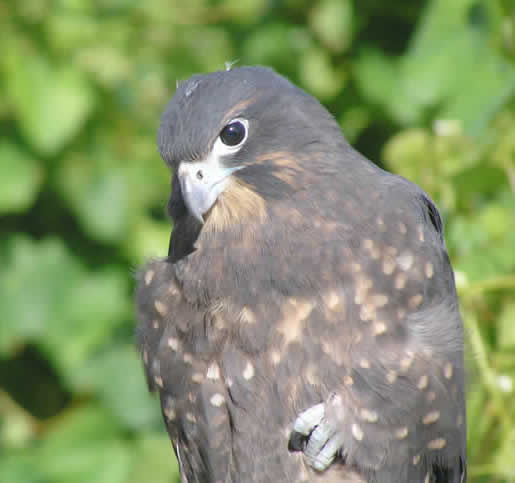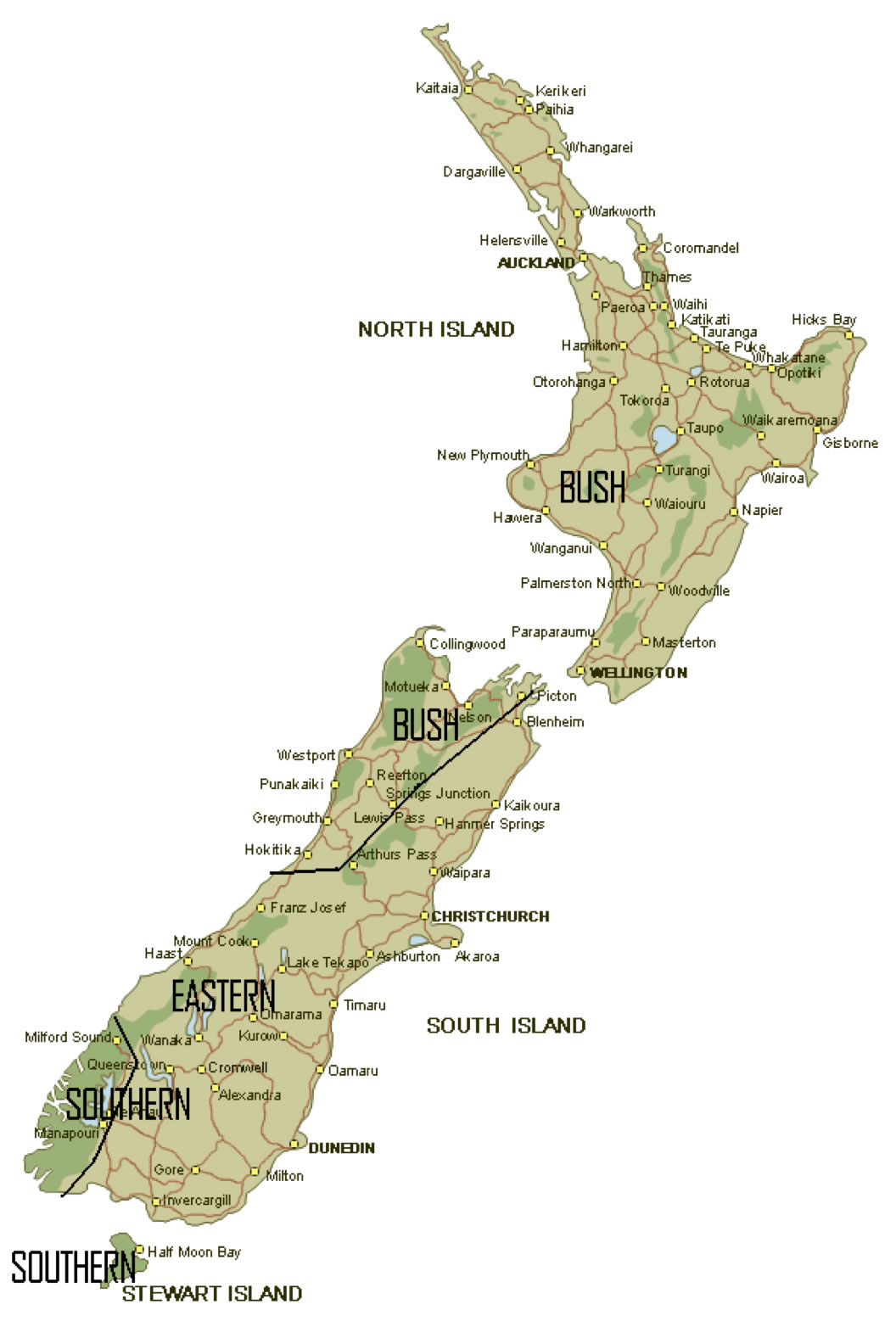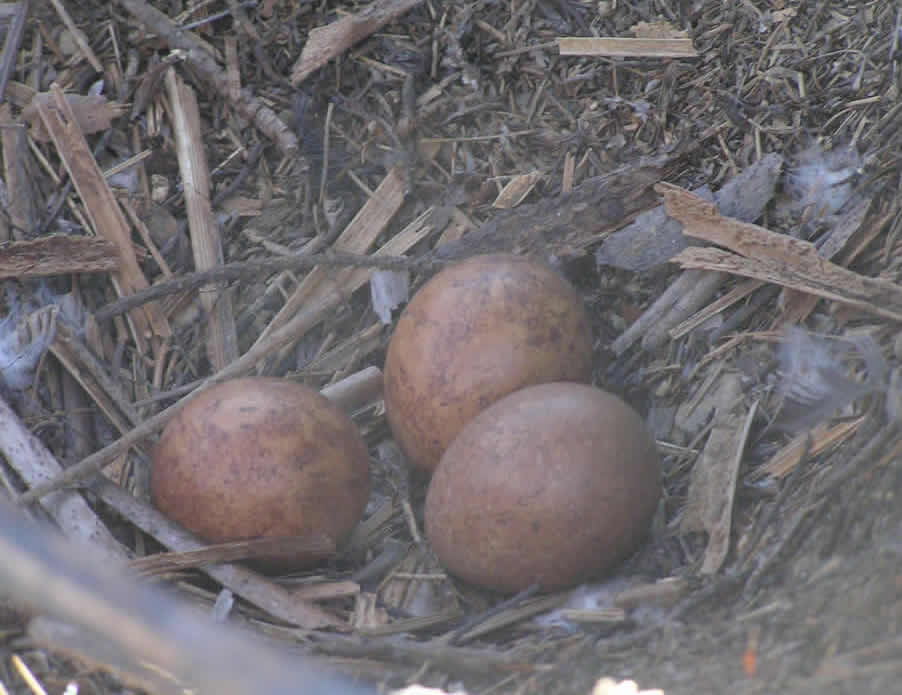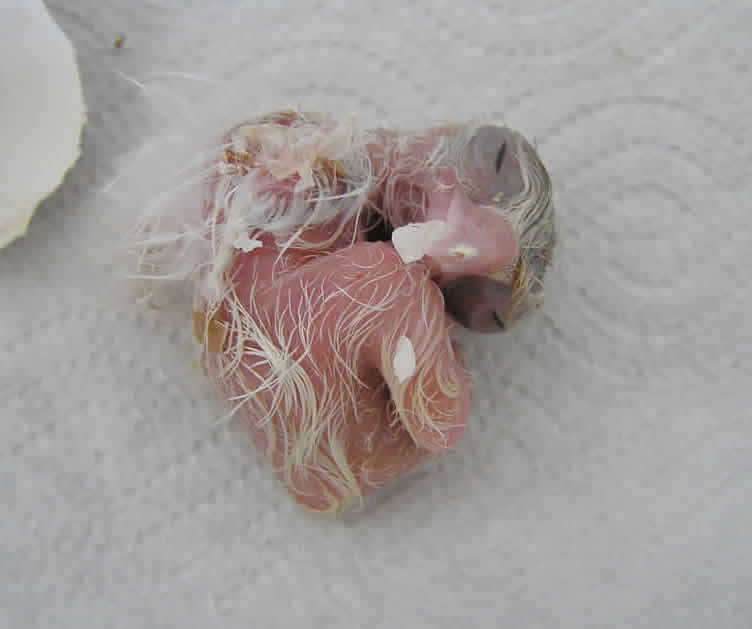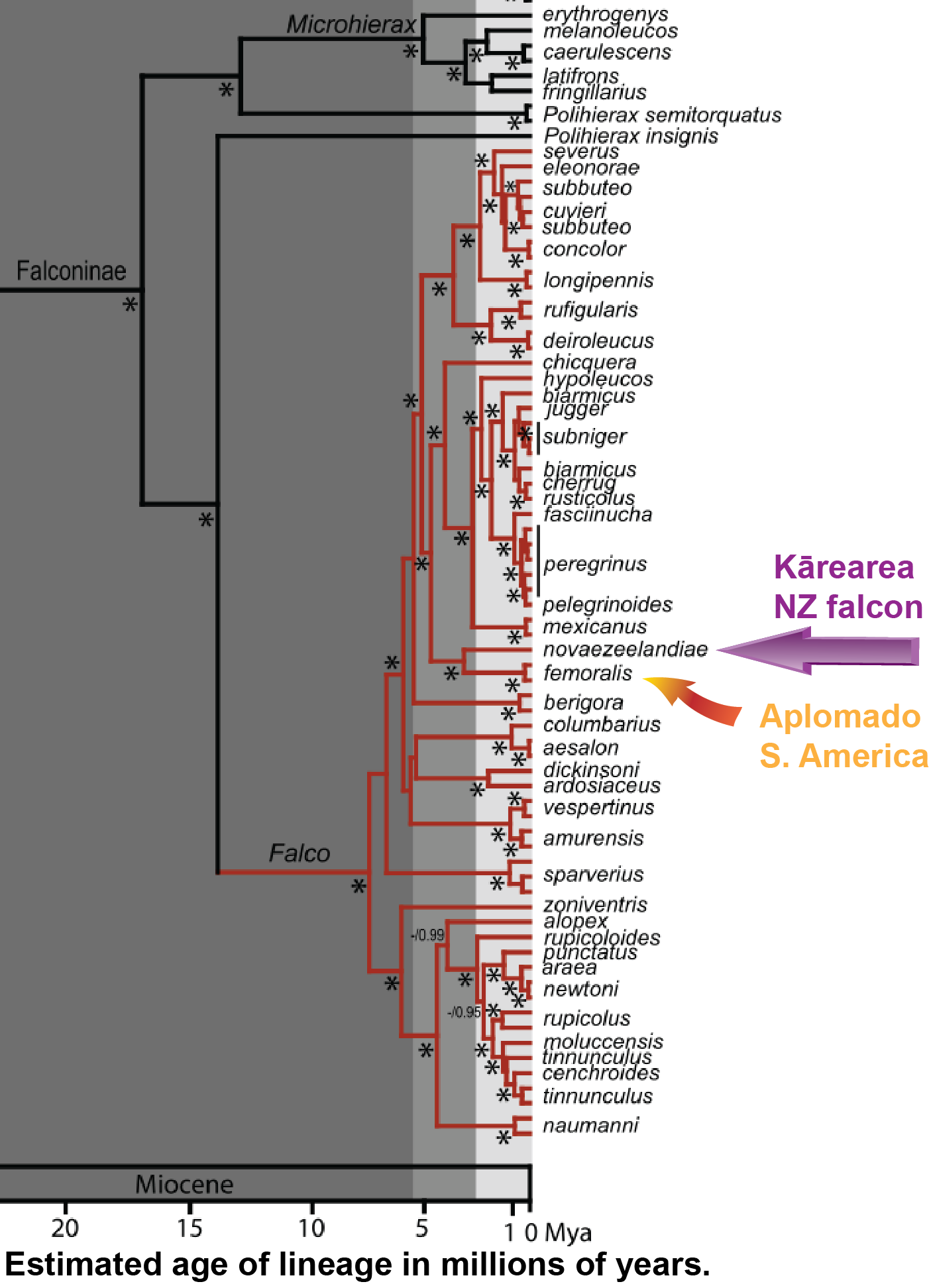Kārearea – New Zealand Falcon Falco novaeseelandiae
Although currently defined as a single species, three distinct races are generally recognised. These are usually referred to as the Bush, Eastern and Southern and considered to differ morphologically and ecologically as well as in their spatial distribution . However, there is uncertainty about precise geographic boundaries of the three races and correlation of morphology, ecology and behaviour. Bush and Eastern falcons are considered to have ranges that meet or overlap in northern and western South Island, suggesting that they are not spatially isolated.
Fuchs et al. (2015) recently showed that, amongst all living falcons, the Kārearea is most closely related to the aplomado falcon of South America. They shared a common ancestor that probably existed about 2.5 million years ago (see right). Even though New Zealand is about 1500 km from Australia, and much further from South America, falcons have clearly been good at travelling around the world. The young history of this raptor in New Zealand is consistent with the recent arrival of Australasian marsh harrier (Circus approximans), and estimated Pleistocene origin of the now extinct giant New Zealand eagle (Hieraaetus moorei), which is closely related to species including the Australian little eagle (Hieraaetus morphnoides).
Our current research on Kārearea – NZ Falcons
From Fuchs, J., Johnson, J. A. & Mindell, D. P. (2015) Rapid diversification of falcons (Aves: Falconidae) due to expansion of open habitats in the Late Miocene. Molecular Phylogenetics and Evolution. 82 :166–182.
|
|
